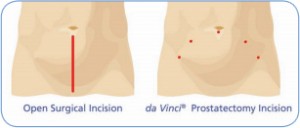Patients are used to asking the question, “When do we starting treating it and what type of treatment will we use?”. But with prostate cancer in many cases the answer could be “We’re not going to treat it.” The “wait and see” approach may well be the right option for your prostate cancer.
Watchful Waiting/Active Surveillance
Also called “active surveillance” the term “watchful waiting” describes one way to “treat” prostate cancer. It is used to describe cases where the prostate cancer patient has opted to refuse surgery, radiation, hormone therapy, and any other medication to treat the prostate cancer. Instead of treatment doctors will rely on prostate-specific antigen (PSA) tests and digital rectal exams (DRE) to monitor disease progression. If and when one of these tests show that the cancer is progressing, at that time other more active treatment options may be considered.
Certain types of prostate cancer can be very slow to progress; some men who have it will never experience any symptoms or problems. Occasionally the disease can actually be less damaging than the treatment. Prostate cancer can be monitored regularly with frequent testing — about every six months — and without surgery or radiation. According to a large, long-term study of nearly 800 men with prostate cancer, the risk of dying from a “low-risk” tumor is similar whether you choose observation or treatment.
Are You a Good Candidate for Watchful Waiting?
Not all patients are good candidates for watchful waiting. Younger men or men who have aggressive prostate cancer are often recommended to take a more proactive approach to treatment, but older men who are concerned about side effects — commonly, impotence and incontinence —may want to consider watchful waiting.
The following are other factors that can indicate whether watchful waiting is a viable treatment method for a prostate cancer patient:
• Early stage diagnosis. The earlier the stage at diagnosis, the more time a prostate cancer patient may have in determining what treatment plan is best.
• Short life expectancy. If a man has a life expectancy of less than five years for other medical reasons he may opt for watchful waiting.
• Having another serious health condition. If a patient is struggling with another disease or health condition, they may not want to proceed with surgery or radiation for prostate cancer at the same time.
• Gleason score. When the cancer is not aggressive and is slow to progress, a man may have a low Gleason score. This patient may consider watchful waiting as an option.




 Dr. John Souchery was diagnosed with prostate cancer. Himself an experienced urologist, he was well aware of the treatment options and outcomes for the treatment of prostate cancer. As a husband, and a grandfather and an active career as well as an active lifestyle, Souchery could not afford a long treatment process.
Dr. John Souchery was diagnosed with prostate cancer. Himself an experienced urologist, he was well aware of the treatment options and outcomes for the treatment of prostate cancer. As a husband, and a grandfather and an active career as well as an active lifestyle, Souchery could not afford a long treatment process.